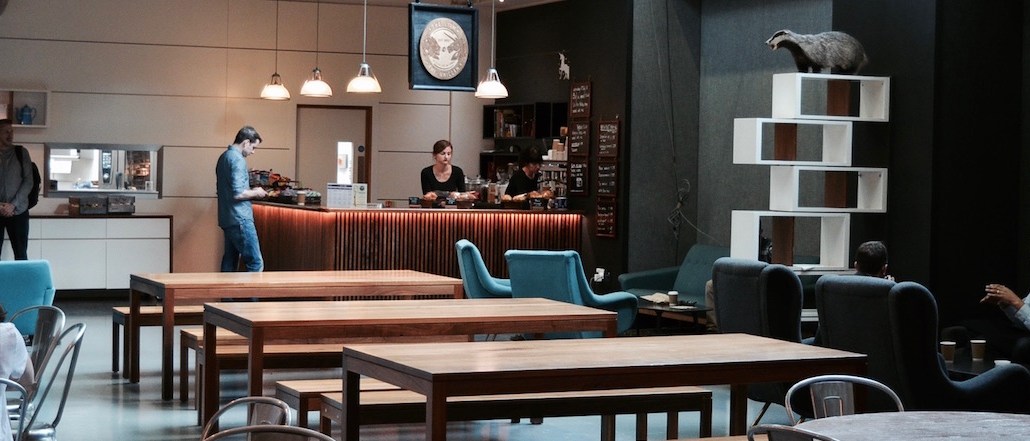
Michael Islip, the CEO of DigitasLBi UK, puts his agency’s success down to collaboration. “It’s in our DNA,” he said. “The people who love it here are those who can instinctively collaborate.”
But, ironically, collaboration gets harder as you grow. Following its 2013 merger with Digitas, the London agency (previously known as LBi) has grown to 630 staffers and around 80 clients including Honda, Barclays and Kellogg’s.
The DigitasLBi office — a cavernous converted brewery in East London’s hipster mecca, Brick Lane — is the frontline of Islip’s efforts to keep the agency’s core tenet alive.
While there are designated areas for departments and separate agencies like Lost Boys, a creative digital agency specializing in social and content, there’s no assigned seating across its three open-plan floors. Employees all hot desk, hopping from spot to spot, including the C-suite.

While it’s important to let different areas thrive, Islip said big teams tend to self-segregate and feel too autonomous. So DigitasLBi’s teams — which are often tailored to a given client — periodically reorganize.
For example, at DIG, the agency’s studio with AstraZeneca, employees often work on six-month sabbaticals from the rest of the agency.

Like any big agency, DigitasLBi also has the challenge of keeping its team engaged with what’s going on.
It now runs “The Insider”, an intranet for staff that features anything from the cafe’s daily menu to details about client visits. Recent press cuttings about the agency also appear on boards around the office walls.

Islip is eager to point out that social activities aren’t just “extracurricular” for the agency, which has been in the space since 2008. Down in the basement, there’s space to have impromptu meetings and order food and drink from its bar. On Fridays, drinks are free.

The downstairs space, which is split in two by a metal shutter, can also open up for bigger events like the agency’s annual rave. This year, over 1,000 attendees partied to DJs Kode9 and Work It at the pagan-inspired event.
There are also regular events on its roof terrace, ideas for which are drawn from its so-called “culture club.” The group is made up of representatives from all departments that are seen as “cultural radiators” (aka fun people).

The office’s retro decor is designed to add human touches to the industrial heritage of the space. “It adds a nice feel to a building that run the risk of feeling cold and impersonal,” Islip said.
There are Mad Men-style breakout areas (one is aptly named Don Draper) featuring mid-century furniture and velvet accents. And rather than TV screens, there’s retro art.
Senior creatives in the agency have a taste for taxidermy. There are two stuffed badgers which Islip said “just appeared” in its basement space. Rumor has it, somewhere there’s a video of one skateboarding around the building.

More in Marketing

Why the New York Times is forging connections with gamers as it diversifies its audience
The New York Times is not becoming a gaming company. But as it continues to diversify its editorial offerings for the digital era, the Times has embraced puzzle gamers as one of its core captive audiences, and it is taking ample advantage of its advantageous positioning in the space in 2024.

Why B2B marketers are advertising more like consumer brands to break through a crowded marketplace
Today’s marketing landscape is more fragmented than ever. Like consumer brands, business brands are looking to stand out in a crowded and competitive marketplace, making marketing tactics like streaming ads, influencers and humorous spots more appealing.

As draft puts WNBA in spotlight, the NBA is speeding up ballplayers’ transition to creators
The NBA’s star athletes are its greatest marketing asset.





